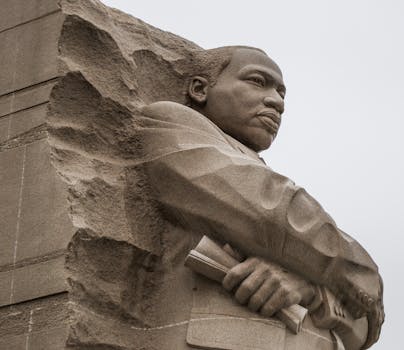Introduction to Hard Bop Jazz: Origins and Influences
Hard Bop Jazz emerged in the mid-1950s as a compelling subgenre of jazz music. It was a direct reaction to the softer sounds and complex structures of Cool Jazz, taking on a more soulful, rhythmic, and melodic approach. The origins of Hard Bop Jazz can be traced back to African American musicians in the United States, who blended the elements of blues, gospel, and rhythm and blues to create a deeply expressive style of jazz. This genre was heavily influenced by artists like Horace Silver, Art Blakey, and Clifford Brown. Their unique approach to jazz music not only shaped the Hard Bop Jazz movement but also left an indelible mark on the history of jazz music.
Key Characteristics of Hard Bop Jazz: A Musical Analysis
Hard Bop Jazz, a sub-genre of jazz that emerged in the 1950s, is known for its rhythmic intensity, strong melodies, and rich harmonies. Unlike its predecessor, bebop, hard bop jazz places a greater emphasis on the melody, making it more accessible to the average listener. This style often incorporates elements of blues and gospel music, adding a soulful and emotive quality to the compositions. The typical hard bop jazz ensemble includes a rhythm section of piano, double bass, and drums, with a frontline of trumpet and saxophone. Improvisation plays a key role in this genre, with musicians using their instruments to express personal emotions and experiences. In essence, hard bop jazz is a vibrant and dynamic style, brimming with energy and passion.
The Pioneers of Hard Bop Jazz: Notable Musicians and Bands
In the captivating history of Hard Bop Jazz, certain musicians and bands stand out for their pioneering contributions. Notable musicians such as Horace Silver and Art Blakey were instrumental in defining this style, characterized by its bluesy, soulful tone and rhythmic complexity. Silver, a gifted pianist, was renowned for his funky, gospel-infused style while Blakey, a formidable drummer, led the Jazz Messengers, a band that served as a launching pad for many future jazz stars. Other significant figures include saxophonist Sonny Rollins and trumpeter Clifford Brown, whose innovative techniques and emotional depth added a unique flavor to Hard Bop. These artists, among others, played a crucial role in shaping Hard Bop Jazz, setting the stage for future generations of jazz musicians.
The Role of Blue Note Records in the Emergence of Hard Bop Jazz
Blue Note Records played a pivotal role in the emergence of Hard Bop Jazz. During the 1950s and 60s, this iconic label became a sanctuary for hard bop musicians. They were given the artistic freedom to experiment and innovate, leading to the development of this unique jazz subgenre. Blue Note's commitment to high-quality recordings also ensured that the rich sounds of hard bop were captured with clarity and precision. This, in turn, helped to popularize the style among jazz enthusiasts around the world. Without the support of Blue Note Records, hard bop might not have gained the recognition it enjoys today.

The Golden Age of Hard Bop Jazz: The 1950s and 1960s
In the Golden Age of Hard Bop Jazz, spanning the 1950s and 1960s, this genre of jazz truly came alive. Musicians pushed the boundaries, creating a vibrant style that blended rhythm and blues, gospel, and blues, with traditional jazz. This was a time when jazz legends like Art Blakey, Horace Silver, and Miles Davis, took center stage, delivering powerful performances and recording unforgettable tracks. The hard bop style, with its intense rhythms and soulful melodies, became a major influence in the jazz world and beyond, shaping the music scene of the era. This period was indeed a golden age for hard bop jazz, leaving us with a rich legacy of music to explore and enjoy.
Iconic Hard Bop Jazz Albums: Must-Hear Recordings
In the world of jazz, the hard bop subgenre stands tall with its rich history. It's a style that beautifully blends the sophisticated elements of bebop with the soulful melodies of rhythm and blues. If you're looking to dive into the world of hard bop, there are several iconic albums you simply must hear. Start with Art Blakey's "Moanin'", a record filled with powerful drumming and unforgettable tunes. Then, explore "Saxophone Colossus" by Sonny Rollins, an album showcasing his virtuosic saxophone skills. Don't forget "Somethin' Else" by Cannonball Adderley, a masterpiece of hard bop featuring the legendary Miles Davis. These recordings not only defined the hard bop era, but also significantly contributed to the evolution of jazz.
The Intersection of Hard Bop Jazz and Civil Rights Movement
During the 1950s and 1960s, hard bop jazz and the Civil Rights Movement intermingled, creating a powerful cultural force. Many hard bop jazz artists, such as Max Roach and Charles Mingus, used their music as a platform to express their feelings about the racial inequality and social injustices of the time. They composed pieces inspired by the ongoing struggle for civil rights, infusing their music with political messages. This intersection of music and social activism not only enriched the genre of hard bop jazz but also played a significant role in amplifying the voice of the Civil Rights Movement. This era saw music and politics blend seamlessly, paving the way for future generations to use art as a means of protest and change.

Hard Bop Jazz in the Modern Era: Influences and Evolution
Hard Bop Jazz, with its roots in the mid-1950s, continues to influence modern jazz significantly. This genre, born from the fusion of rhythm and blues, gospel music, and blues, has evolved into a complex, expressive style that uses more intricate melodies and harmonies. While it initially responded to the dominance of cool jazz and bebop, Hard Bop Jazz grew into its unique form, incorporating African rhythms and instruments. Today, its influence can be seen in numerous contemporary jazz sub-genres. Artists like Art Blakey and Horace Silver were pioneers of this style, and their work is still inspiring modern musicians. Thus, the evolution of Hard Bop Jazz is a testament to its enduring appeal and its significant role in shaping the landscape of contemporary jazz.
The Global Impact and Influence of Hard Bop Jazz
Hard Bop Jazz, which originated in the mid-1950s, has significantly influenced the global music scene. This style, characterized by its bluesy and soulful vibe, became a platform for musicians to express their cultural identity and social issues, particularly African American struggles. Its impact was not just limited to the United States; it resonated across the globe. In Europe, for instance, it sparked a new interest in jazz, inspiring a generation of musicians. In Asia, Hard Bop Jazz elements can be found in various local music genres. Today, Hard Bop Jazz's legacy continues, its influence still evident in many modern jazz variations, making it a pivotal part of music history.
Preserving the Legacy of Hard Bop Jazz: How the Genre Lives On Today.
Hard Bop Jazz, a sub-genre of jazz music, emerged in the mid-1950s and has since left an indelible mark on the world of music. Today, its legacy lives on and continues to inspire modern musicians, thanks to its unique blend of rhythm and blues, gospel, and blues. Hard Bop Jazz is more than just a genre; it's a timeless form of expression that has transcended generations. Contemporary artists, from jazz musicians to hip-hop producers, frequently draw inspiration from its rich, soulful tones and complex rhythms. These artists are not merely replicating the hard bop sound, but they are also innovating and adding their own twist to it. In this way, the legacy of Hard Bop Jazz is not only preserved but also continuously evolving, ensuring its relevance and influence in today’s music scene.
